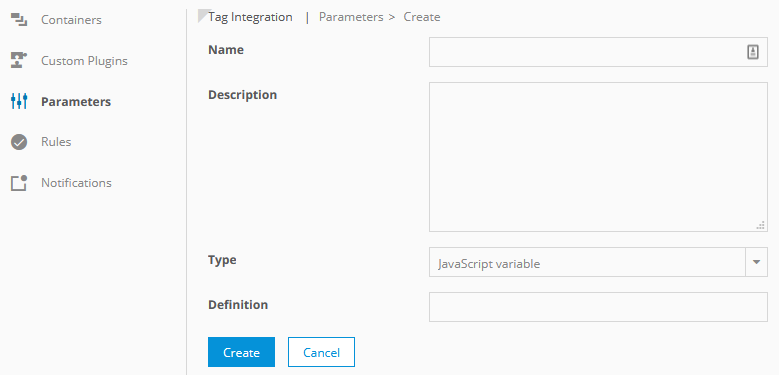- 1 Minute to read
- Print
- DarkLight
Adding Tag Integration Parameters
- 1 Minute to read
- Print
- DarkLight
After having set up a data layer with initial parameters as described here, you need to map the parameters in Tag Integration. Otherwise, the values are not used for tracking. For this purpose, values from the data layer are created one by one as parameters in Tag Integration.
To create parameters in Tag Integration, proceed as follows:
In Tag Integration, navigate to Parameters in the main navigation area.

Click New parameter to add a new parameter.
Now make the settings for this parameter:

Parameter
Description
Example
Name
Enter a name for the new parameter.
Customer ID
Description
Optionally, add a description to the field provided.
Contains customer ID after login
Type
Select from the dropdown list the required type, from which the value should be read out:
JavaScript variable
URL parameter, for example, to process campaign codes that are already linked to this URL
All URL parameters have to be UTF-8 encoded.
Mobile parameter
JavaScript variable
Definition
Add the name of the JavaScript variable or URL parameter.
if you are using "wts": "wts.get ('customerID')
if you are using other: arrayname[variableposition].variablename
Double quotation marks are not allowed.
_ti.customerId
Click Create to add the new parameter. The new parameter will be added to the list of existing parameters in the overview. You have now successfully created new parameters, which you now have to assign to the tracking function in the Mapp Intelligence plugin.
Although 90% of the usual tracking requirements are covered with individual parameters, such as recording pages, adding individual information to pages, tracking of products and orders, forms, etc., you can even improve the tracking performance using event-driven tracking. Please read the description of this feature in the chapter Event-driven Functions.



